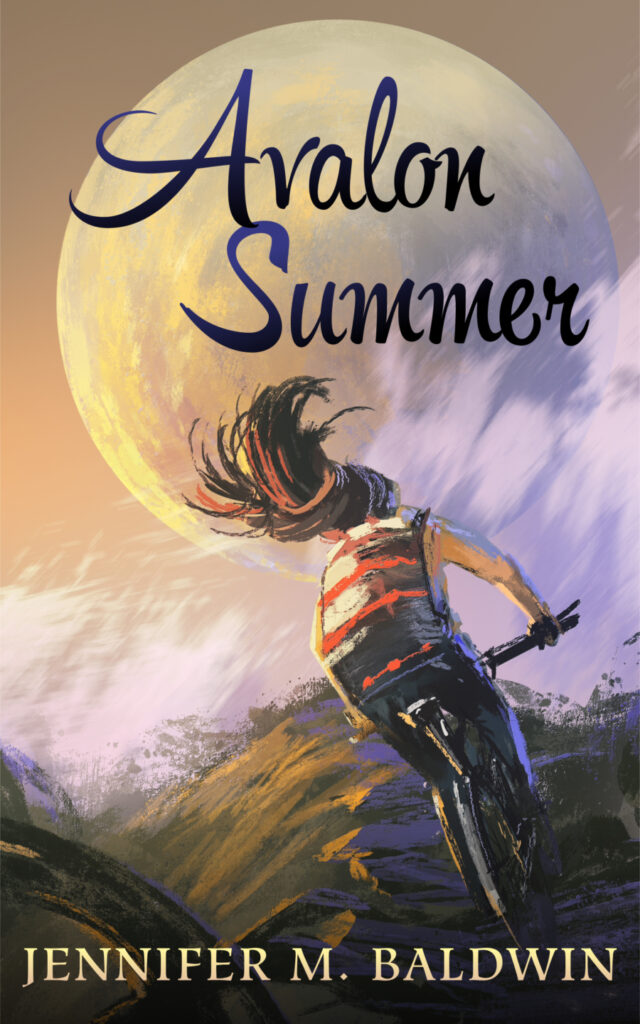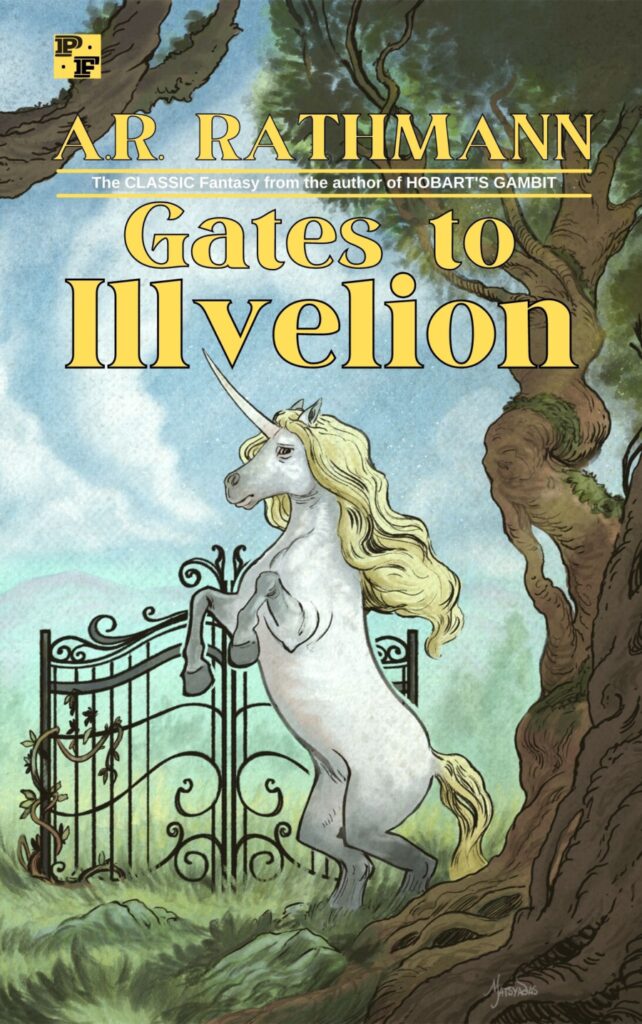
My parents always loved making a big deal out of birthdays, but my tenth birthday was by far the biggest deal they ever made. They decided we were going to drive to Chicago for a family trip (we lived in Michigan, for geographical frame of reference). Why Chicago? Why my tenth birthday? I have no idea, but I made no objections. Who wouldn’t want to go to Chicago for her birthday? We were going to stay at the Water Tower Place hotel, eat at Ed Debevic’s, visit the Field Museum and the Shedd Aquarium, AND — this is the thing my ten-year-old brain was inexplicably most excited about — we were going to bring a portable TV/VCR in the minivan so my brother and I could watch movies during the long drive (this anecdote tells you how old I am that DVD players and screens didn’t come pre-installed in vehicles).
We rented a slew of movies, but the one I remember most was The Hobbit — not Peter Jackson’s Hobbit franchise (which hadn’t been made yet) — the Rankin-Bass animated movie from the 1970s.
This movie… let’s just say, this movie will make a future appearance in The Things That Shaped Me series.
We watched it on the way to Chicago and then on the way home to Michigan, so it served as a bookend to the birthday trip, an opening act and a closing act. I was obsessed with The Hobbit — book and movie — and by extension, Middle-Earth. But only The Hobbit-version of Middle-Earth. I hadn’t read The Lord of the Rings yet. At ten-years-old, I wasn’t a good enough reader to handle the lengthier, weightier Rings books.
 But I loved Tolkien’s world: the forests; the mountains; the dragons, goblins, elves, and dwarves. Mirkwood was as real to me as the little patch of woods that surrounded my grandmother’s house. The Misty Mountains were unspeakably enchanted, a world within a world filled with treasure, ancient lore, and shadowy creatures; I longed to travel there. And the map of the “Wilderlands” and Thorin’s map were like sacred manuscripts.
But I loved Tolkien’s world: the forests; the mountains; the dragons, goblins, elves, and dwarves. Mirkwood was as real to me as the little patch of woods that surrounded my grandmother’s house. The Misty Mountains were unspeakably enchanted, a world within a world filled with treasure, ancient lore, and shadowy creatures; I longed to travel there. And the map of the “Wilderlands” and Thorin’s map were like sacred manuscripts.
Although the trip to Chicago was exciting, what I wanted more than anything for my tenth birthday was something much simpler, and at the same time much stranger: I wanted the boxed set for MERP: Middle-Earth Role-Playing.
 Back in those days, I had never played a role-playing game before. Frankly, I didn’t have anyone to play a role-playing game with. But I wanted MERP. The cover illustration alone was worth it. Also, there was something dangerously appealing about role-playing games. These games came with a dark reputation back in the 80s and early 90s. I was forbidden to play D&D; I had to work hard convincing my parents that other RPGs were okay and not gateways to Satanism. Somehow, I convinced them that MERP was alright. Maybe they figured a Tolkien-influenced game couldn’t be too bad. But the mystique, the forbidden quality of RPGs was still there, even if the cover said “Middle-Earth Role-Playing” and not “Dungeons and Dragons.”
Back in those days, I had never played a role-playing game before. Frankly, I didn’t have anyone to play a role-playing game with. But I wanted MERP. The cover illustration alone was worth it. Also, there was something dangerously appealing about role-playing games. These games came with a dark reputation back in the 80s and early 90s. I was forbidden to play D&D; I had to work hard convincing my parents that other RPGs were okay and not gateways to Satanism. Somehow, I convinced them that MERP was alright. Maybe they figured a Tolkien-influenced game couldn’t be too bad. But the mystique, the forbidden quality of RPGs was still there, even if the cover said “Middle-Earth Role-Playing” and not “Dungeons and Dragons.”
The old MERP game came in a box, with the core book and several other supplements, including cardboard playing pieces and two ten-sided dice. Whenever I see pictures of the old MERP books — the core book, the different supplement books for the peoples and creatures of Middle-Earth — an overwhelming wave of nostalgia washes over me. I can’t quite explain it; like all old memories, it’s both intense and inexplicable. I can see and smell and sense all the moments from those old days, but I cannot make you see and smell and sense them in the same way. Memories are like dreams; once we start to tell about them, they inevitably lose their magic, they become pedestrian and plain, they don’t capture the electricity and potency of what we see in our heads. Opening that box-set on my birthday and seeing those Angus McBride illustrations, holding the cardboard cut-outs and the ten-sided dice — it’s a feeling I find hard to describe. When the opening pages of the core book promised that “this game lets you step out of this world and stride boldly into Middle-earth,” I believed it: I was going to stride into Middle-Earth. I was going to experience adventures I’d never experienced before.
 This memory is so strong, so central to my childhood, that I know I cannot convey to you what it really felt like. Flipping through the old MERP books brings me back to the past, to being ten-years-old, to being in the backseat of our minivan, watching the Rankin-Bass Hobbit, to being a kid who loved fantasy and who felt like she had to hide that love from the outside world. And there was the forbidden danger of role-playing games: the thrill of reading something that was maybe a bit too adult, a bit too beyond my ken.
This memory is so strong, so central to my childhood, that I know I cannot convey to you what it really felt like. Flipping through the old MERP books brings me back to the past, to being ten-years-old, to being in the backseat of our minivan, watching the Rankin-Bass Hobbit, to being a kid who loved fantasy and who felt like she had to hide that love from the outside world. And there was the forbidden danger of role-playing games: the thrill of reading something that was maybe a bit too adult, a bit too beyond my ken.
Whenever I look at those MERP books now, after all these years, I feel the excitement of ten-year-old me, the sense that I’m about to embark on a strange, unknown, wondrous adventure — like Bilbo stepping outside his door to find the Lonely Mountain. But how can I make you feel these same feelings, or catch a glimpse of what they mean to me? I can’t. I can only hope that perhaps you loved MERP as a kid too, or that you know what it feels like to watch The Hobbit while the moon is rising between the clouds on a summer’s night.

 I decided to set my series, Merlin’s Last Magic, in the 1980s because, for me, the 1980s were the “golden age” of fantasy-related stuff: Conan. Red Sonja. Labyrinth. The Dark Crystal. The Last Unicorn. The Neverending Story. Ladyhawke. Dragonslayer. Legend. The Dragonlance Chronicles. HeroQuest.
I decided to set my series, Merlin’s Last Magic, in the 1980s because, for me, the 1980s were the “golden age” of fantasy-related stuff: Conan. Red Sonja. Labyrinth. The Dark Crystal. The Last Unicorn. The Neverending Story. Ladyhawke. Dragonslayer. Legend. The Dragonlance Chronicles. HeroQuest. I’m an incredibly nostalgic person.
I’m an incredibly nostalgic person. The Lone Wolf books were perfect: Choose Your Own Adventure meets solo-RPGing.
The Lone Wolf books were perfect: Choose Your Own Adventure meets solo-RPGing. Unfortunately, in the pre-Internet age, it was hard to find many Lone Wolf books. I’m not sure I ever found more than two. Just as quickly as I had found them and loved them, I had met a dead-end.
Unfortunately, in the pre-Internet age, it was hard to find many Lone Wolf books. I’m not sure I ever found more than two. Just as quickly as I had found them and loved them, I had met a dead-end. Then I laughed almost hysterically. It was like seeing a long-lost best friend while standing in line at the DMV.
Then I laughed almost hysterically. It was like seeing a long-lost best friend while standing in line at the DMV. I started with Book 3. Every page was dripping with nostalgic memories: the map at the front, the “Action Chart,” the “Combat Results Table.” I resisted the urge to look up anything on the Internet about how to “win” the adventure. I wanted my experience to be fresh, untainted.
I started with Book 3. Every page was dripping with nostalgic memories: the map at the front, the “Action Chart,” the “Combat Results Table.” I resisted the urge to look up anything on the Internet about how to “win” the adventure. I wanted my experience to be fresh, untainted.

